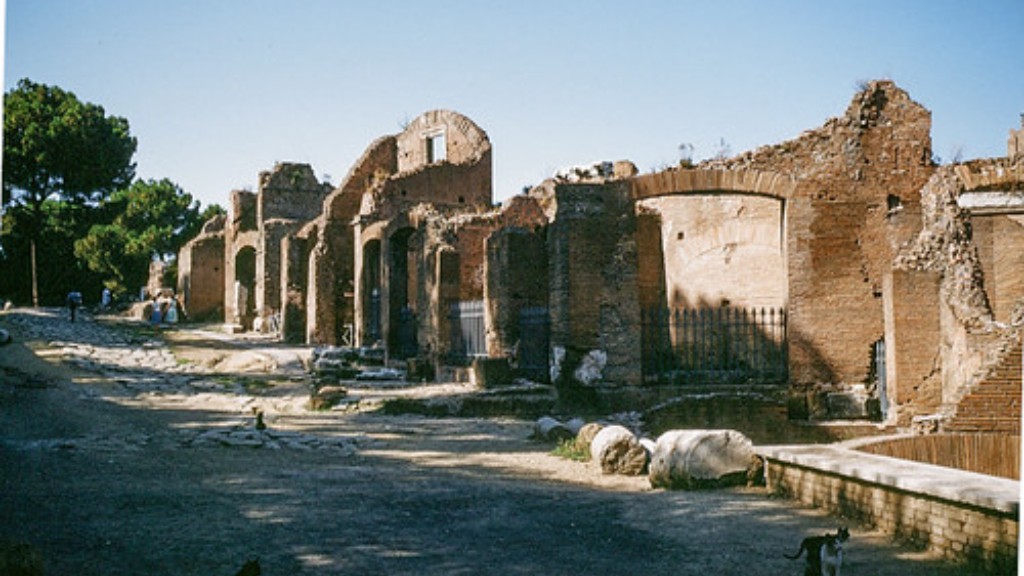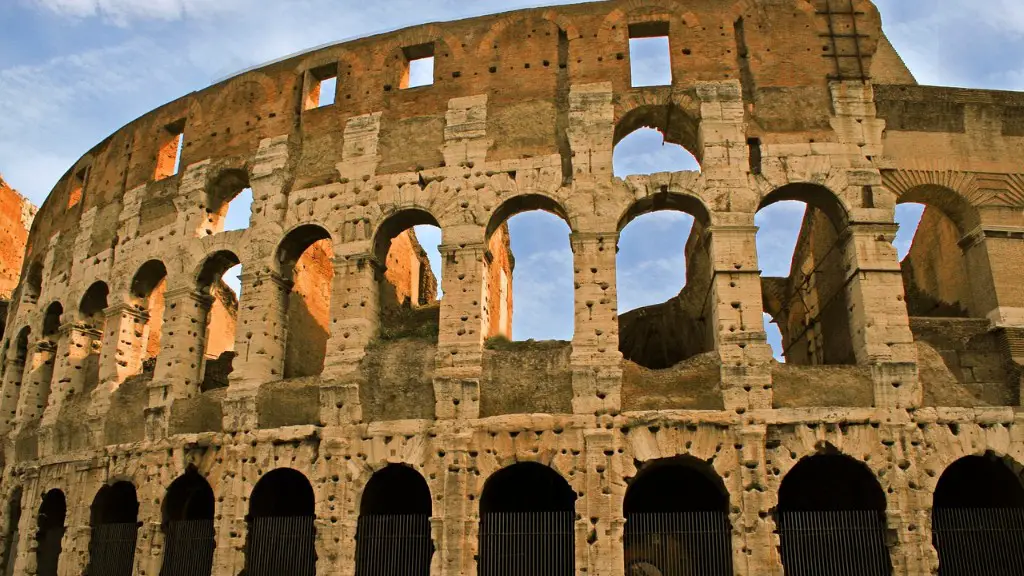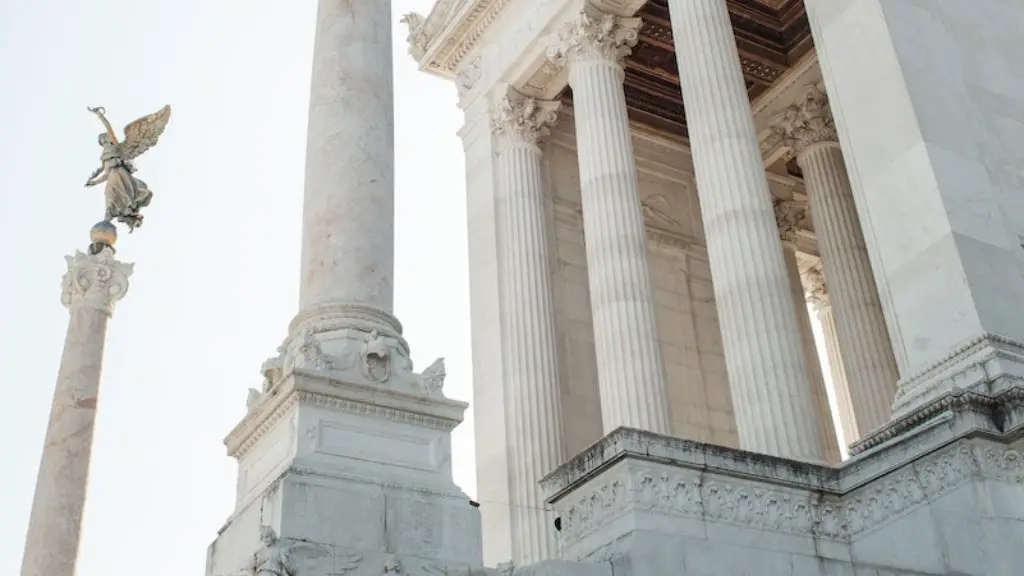When attempting to learn about the lifestyles of everyday people in ancient Rome, it is important to remember that the people lived in vast countryside filled with farms and small villages. Life in the countryside of ancient Rome was full of hard work, yet people felt a strong connection to their local communities. Let’s take a closer look at what life was like for ancient Romans living in the countryside.
In ancient Rome, farming life was the primary source of sustenance for most people living in the countryside. People had to work hard to make enough food for their families to survive. They used manual labor and basic tools, such as plows and sickles, to cultivate the land. Ancient Romans also relied on animals, such as oxen and horses, to pull the plows and sow seeds in the soil. Some families had their own animals while others hired their neighbors’ animals or rented them from animal traders. Ancient Roman farmers also raised livestock, such as goats, pigs, and cattle, to feed their families.
It was also common for ancient Romans living in the countryside to hunt and fish for food. Hunting with weapons such as spears was part of everyday life, as well as fishing with simple lines and traps. Ancient Romans also found small game in the countryside such as rabbits, pheasants and doves. All these food sources provided the people of ancient Rome with a means for survival and gave them the chance to enjoy a more varied diet than the one they could afford from their farms.
In addition to these types of activities, ancient Romans living in the countryside also took part in various types of leisure activities. Although people often did not have a lot of spare time, they still found ways to relax and enjoy themselves. Popular activities included playing board games, watching gladiatorial games, and listening to music. People also had access to public baths, temples, and other places of worship. These were places where people could come together to meet and discuss the politics of the day or just to have a good time.
Finally, it is important to note that the people of ancient Rome living in the countryside had a strong sense of community and shared a common set of values, such as loyalty and respect. They would often gather around bonfires to celebrate festivals or births, creating strong bonds among the members of the community. In many ways, these close ties among people in the countryside helped maintain a sense of unity throughout Rome, despite the vast differences in social status among its citizens.
Organized Religion
Organized religion was a foundational element of Roman culture, and several traditional gods and goddesses were worshipped. People in the countryside would offer prayers and offerings to the gods and goddesses for the welfare of the families and the community. Ancient Rome’s pantheon of gods and goddesses included gods such as Jupiter, Minerva, and Mars, and people often gathered in temples to remember them. Furthermore, gods and goddesses were essential to the status of each community and would oversee various types of rituals and festivals.
In the countryside, these gods and goddesses were embodied and protected by their own temples and shrines, with local priests called flamines acting as their guardians and asking the gods to provide prosperity and fortune. Ancient Romans believed that the gods protected them and provided them with food, health, and luck. In return, the people of ancient Rome had to show their respect and loyalty by offering sacrifices to their gods and goddesses. This gave them a feeling of safety and security in their daily lives.
Communication
Communication in ancient Rome was a huge part of everyday life. In the countryside, people used a variety of methods to communicate such as runners, messengers on horseback, and the classic methods such as knocking on neighbours doors and calling out to them. However in larger communities, people likely would have used more organized forms as communication such as writing letters and delivering them to one another by messenger. The impact of these methods of communication likely had huge impacts on the people of ancient Rome and contributed to some of their success as an empire.
When living in the countryside, most people likely did not travel much and only had contact with those who lived close to them. The letter was the main form of communication between different locations and can be seen as a symbol of nationalism, as it kept people living in different parts of the Roman Empire in contact with each other and bound them together.
Additionally, rural towns were run by a local magistrate who was both an administrator and a judge. This means that he was responsible for collecting taxes from the people, enforcing laws, and keeping order in the community. This person was appointed by the Roman government and was an essential part of keeping the countryside in order.
Gastronomy
Aside from the aforementioned aspects of ancient Roman country life, food was also a central feature of it. Ancient Roman cuisine was heavily influenced by the agriculture of the rural area and restricted by the seasons and limited availability. Cereals such as wheat, millet, and barley were the primary grains cultivated in the countryside, while legumes such as chickpeas, fava beans, and lentils were also used to enhance stews. Grapes, olives, and figs were also commonly used in dishes.
Fish, pork, goat, and game were often used for protein. Vegetables were generally farmed locally and were used in dishes as well. Oil, vinegar, honey, and herbs were common ingredients used to season dishes. All of these items made up the hearty country specialties found in the menus of the villages of ancient Rome.
Beyond the food, it’s also likely many country people consumed wine and beer. These drinks were also used to make offerings to the gods. Wine was mostly used by the wealthier Romans, while beer was most common among the poorer villagers.
Creative Expression
Entertaining activities were integral to life in the countryside of Ancient Rome. Even though the majority of people were involved in daily chores, the villagers still found time for pleasure. Poetry and singing were two of the most popular forms of entertainment, and storytellers were also highly prized for their ability to make people laugh and cry with their tales. Drama and theatre were also popular, although not as popular as poetry and music.
At the same time, sports were also part of the entertainment, and people often organized events that involved wrestling, running, riding, and chariot races. Ancient Romans in the countryside also took part in sporting events such as the chariot races of the Circus Maximus, a large stadium in the center of Rome. Other sports, such as Javelin throwing, were also popular. These events were seen as a welcome escape from the hard work and stress of everyday life.
Education and Socialization
Education in the countryside of ancient Rome was limited and was mainly carried out by parents or tutors who visited the home and gave private lessons to children. Generally, it was only the wealthy who had access to formal education, although the more affluent families sent their children to schools in the city for advanced learning. Boys and girls were taught reading, writing, mathematics, and philosophy.
However, education was not the only form of knowledge and culture that the people of ancient Rome gained from the countryside, as socializing with each other was also important to the culture. Although there were differences between the various classes of people, like between the wealthy and the slaves, people still gathered for parties, festivals and markets. These social events provided people with a sense of community and helped form cultural bonds between them.
Medical Care
Medical care in ancient Rome was based largely on herbal remedies and physical therapy. In the countryside, physicians used local herbs and plants to treat illnesses. These herbal remedies were mixed with teas, tinctures, and poultices that were used to heal wounds, treat fevers, and ease pain. Ancient Roman physicians were also known to use a variety of methods to relieve pain such as cupping, aromatherapy, and massage.
In addition, midwives were essential figures in rural areas to help women deliver their children. These women relied on their knowledge of local herbs and plants to heal illnesses and assist during childbirth. Also, not wanting to have to travel far with a pregnant woman, midwives would generally be called in during emergencies.
Finally, while surgery was not as advanced as it is today, some operations were performed. Physicians used iron tools to perform simple surgeries such as setting broken bones and removing tumours. They also used needles to perform surgeries such as stitching wounds and tying off organs.





